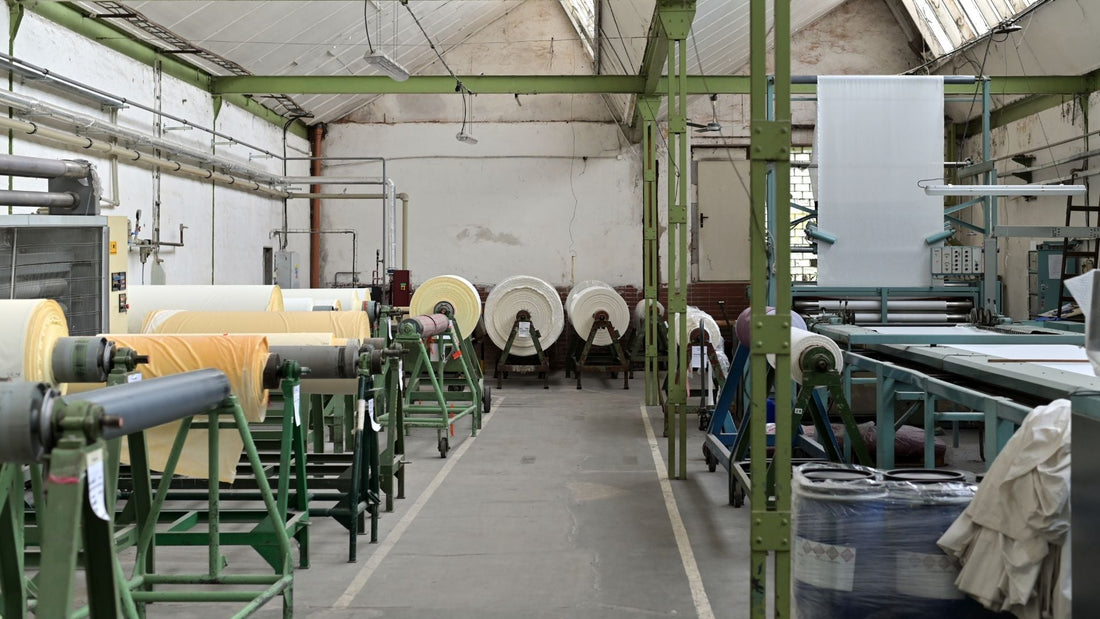
How are microplastics and fashion connected?
Share
Microplastics have become an increasingly discussed topic — but what exactly are they, and how do they relate to the fashion industry? Let’s take a closer look at how synthetic materials significantly contribute to the release of microplastics not only into the environment but also into our bodies. And why sustainable fashion is not only important because of the waste generated by overconsumption, but also due to the waste released while wearing the clothes.

What are microplastics?
Microplastics are tiny plastic particles ranging in size from 100 nanometers to 5 millimeters. They can be divided into two categories based on their origin — primary and secondary. Primary microplastics are intentionally released into the environment in the form of small particles. These include 35% from washing synthetic clothes, 28% from tire wear while driving, and others from cosmetic products like exfoliants. Secondary microplastics are created through the breakdown of larger plastic items like fishing nets, plastic bags, and bottles.
Synthetic clothing and microplastics – why is it a problem?
You’ve likely heard of synthetic materials like acrylic, polyester, or polyamide. These artificial fibers are mostly made from plastic or recycled plastic bottles. Although they may seem sustainable at first glance, the reality is quite the opposite.
The biggest issue arises when washing clothes. Marine biologist Imogen Napper conducted a study to examine how many microplastic particles are released during one laundry cycle. Some fibers were visible to the naked eye, but most are so small they’re only detectable under a microscope. Washing machines cannot capture these particles, so they continue into water treatment plants, which can only remove a portion of them. Napper found that up to 700,000 synthetic fibers can be released in a single wash.

What can I do?
Swap synthetic fibers for natural materials
If you want to reduce your environmental footprint, choose natural fabrics. Not only do they have better properties, but they also don’t release microplastics into the environment — which could ultimately end up on your plate.
Did you know linen has antibacterial properties? That means you don’t need to wash it as often. The material also wears down less, making it longer-lasting, and you use less water in the process. Usually, airing out linen clothes is enough to get rid of any odors.
Linen dresses Linen shirts Linen bedding
Another advantage of natural fabrics is their properties. For example, organic cotton is ethically sourced, and its cultivation doesn’t use pesticides or chemical fertilizers. It’s breathable, allowing better air circulation and helping to prevent overheating.
Organic cotton sweatpants Organic cotton turtlenecks Home & Co.
Eco-friendly laundry
If part of your wardrobe is made from synthetic fabrics and you don’t want to get rid of it, you can still take steps to reduce environmental impact — and save money. Eco-friendly laundry isn’t just about using gentle detergents.
Frequent washing is not necessary
Washing consumes water, releases chemicals from detergents, and causes microplastic pollution. Dirty clothes don’t always need to go straight into the machine — a stain can often be removed with bile soap.
Lower temperatures and eco detergents
Did you know you don’t need warm water to wash clothes? Washing in cold water saves energy and prolongs the lifespan of your clothes. You can also use eco-friendly laundry detergents — either store-bought or homemade!
Microplastic-catching laundry bags
When washing is unavoidable, use microplastic filter bags for synthetic clothes. These special bags are made from materials that catch microplastic fibers so they don’t enter wastewater systems.

Sources:

